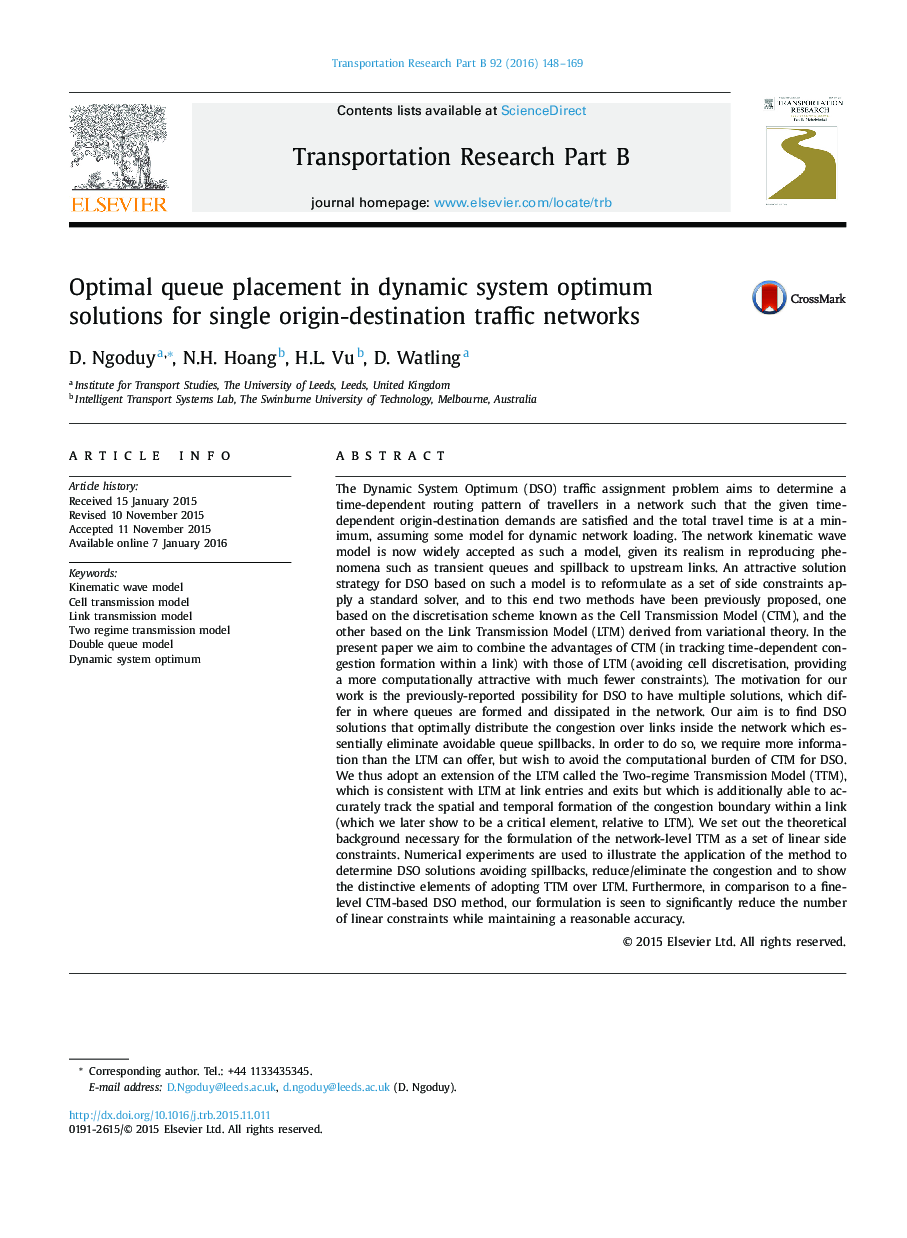| Article ID | Journal | Published Year | Pages | File Type |
|---|---|---|---|---|
| 5127132 | Transportation Research Part B: Methodological | 2016 | 22 Pages |
â¢Extend the link transmission model as a set of linear constraints of the DSO problem where the queue lengths are explicitly calculated.â¢Formulate a new two steps optimisation problem to find DSO solutions which optimally distribute the queue over links in the network.â¢Describe that the newly found DSO solutions can help minimize traffic spillbacks or reduce the congestion inside the network.â¢Show that the number of the constraints and variables as well as the computational time in our proposed framework are increased linearly with the network size as opposed to CTM-DSO where they are increased polynomially.
The Dynamic System Optimum (DSO) traffic assignment problem aims to determine a time-dependent routing pattern of travellers in a network such that the given time-dependent origin-destination demands are satisfied and the total travel time is at a minimum, assuming some model for dynamic network loading. The network kinematic wave model is now widely accepted as such a model, given its realism in reproducing phenomena such as transient queues and spillback to upstream links. An attractive solution strategy for DSO based on such a model is to reformulate as a set of side constraints apply a standard solver, and to this end two methods have been previously proposed, one based on the discretisation scheme known as the Cell Transmission Model (CTM), and the other based on the Link Transmission Model (LTM) derived from variational theory. In the present paper we aim to combine the advantages of CTM (in tracking time-dependent congestion formation within a link) with those of LTM (avoiding cell discretisation, providing a more computationally attractive with much fewer constraints). The motivation for our work is the previously-reported possibility for DSO to have multiple solutions, which differ in where queues are formed and dissipated in the network. Our aim is to find DSO solutions that optimally distribute the congestion over links inside the network which essentially eliminate avoidable queue spillbacks. In order to do so, we require more information than the LTM can offer, but wish to avoid the computational burden of CTM for DSO. We thus adopt an extension of the LTM called the Two-regime Transmission Model (TTM), which is consistent with LTM at link entries and exits but which is additionally able to accurately track the spatial and temporal formation of the congestion boundary within a link (which we later show to be a critical element, relative to LTM). We set out the theoretical background necessary for the formulation of the network-level TTM as a set of linear side constraints. Numerical experiments are used to illustrate the application of the method to determine DSO solutions avoiding spillbacks, reduce/eliminate the congestion and to show the distinctive elements of adopting TTM over LTM. Furthermore, in comparison to a fine-level CTM-based DSO method, our formulation is seen to significantly reduce the number of linear constraints while maintaining a reasonable accuracy.
